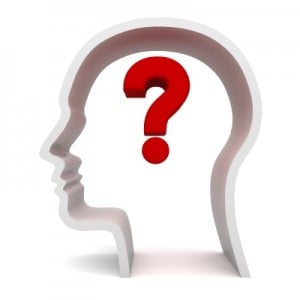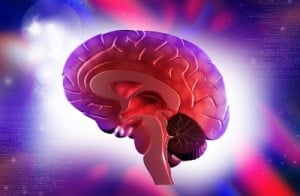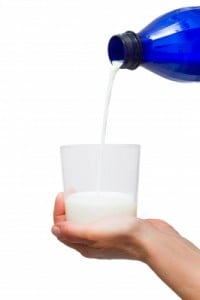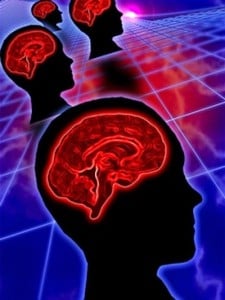“The American Academy of Pediatrics supports Biofeedback rating efficacy at ‘Level 1, Best Support’”
September 2010 American Academy of Pediatrics analysis of Evidenced-Based Child and Adolescent Interventions
"Dr. Ross and the staff of Advanced Neurotherapy possess a combination of skills and competence unusual in the field of Neurotherapy. Their highly evolved technical and clinical skills provide for a powerful application of this tool."
Dr. Barry Sterman, founder of the field of Neurofeedback Professor Emeritus of Neurobiology and Biobehavioral Psychiatry, UCLA School of Medicine
“EEG biofeedback meets the American Academy of Child and Adolescent Psychiatry criteria for clinical guidelines for treatment of ADHD, seizure disorders, anxiety (OCD, GAD, PTSD, phobias), depression, reading disabilities, and addictive disorders. This suggests that EEG biofeedback should always be considered as an intervention for these disorders by the clinician.”
The editors of Child and Adolescent Psychiatric Clinics of North America Volume 14, Number 1 January 2005.
“The neuro-feedback program produced patient outcomes equivalent to those obtained with stimulant drugs …”
Rossiter, T. R. Thomas Rossiter The Effectiveness of Neurofeedback and Stimulant Drugs in Treating AD/HD: Part II. Replication APPLIED PSYCHOPHYSIOLOGY AND BIOFEEDBACK Volume 29, Number 4, 233-243, December, 2004
“Overall, these findings support the use of multi-modal treatment, including medication, parent/school counseling, and EEG biofeedback, in the long-term management of ADHD, with EEG biofeedback in particular providing a sustained effect even without stimulant treatment…parents interested in non-pharmacological treatment can pursue the use of complementary and alternative therapy. The therapy most promising by recent clinical trials appears to be EEG biofeedback.”
Katie Campbell Daley, Children’s Hospital Boston and Harvard Medical School The journal Current Opinion in Pediatrics: April 2004 - Volume 16 - Issue 2 - p 216 Office pediatrics: EDITORIAL OVERVIEW
“The EEG and Clinical Neuroscience Society supports Neurofeedback in the treatment of
Seizure Disorders saying: “Based on this meta-analysis, EEG operant conditioning was found to produce a significant reduction in seizure frequency. This finding is especially noteworthy given the patient group, individuals who had been unable to control their seizures with medical treatment.”
Gabriel Tan, John Thornby, D. Corydon Hammond, Ute Strehl, Brittany Canady, Kelly Arnemann and David A. Kaiser. Meta-Analysis of EEG Biofeedback in Treating Epilepsy, Journal of Clinical EEG & Neuroscience, July, 2009
“An assessment of over 25 years of peer reviewed research demonstrat[ed] impressive EEG and clinical results achieved with the most difficult subset of seizure patients.”
M. Barry Sterman Basic Concepts and Clinical Findings in the Treatment of Seizure Disorders with EEG Operant Conditioning. Clinical EEG,31,(1), 2000.
“…Three randomized controlled trials …have shown neurofeedback to be superior to a (semi active) control group. The semi active control group in these studies can be regarded as a credible sham control providing an equal level of cognitive training and client-therapist interaction. Therefore, in line with the uidelines for rating clinical efficacy, we conclude that neurofeedback treatment for ADHD can be considered “Efficacious and Specific” (level 5) with a high ES [Effect Size] for inattention and impulsivity and a medium ES for hyperactivity.”
“For parent and teacher ratings, improvements in the neurofeedback group were superior to those of the control group (medium effect size).”
“Astonishingly, the successful enhancement of SMR [Sensory Motor Rhythm] amplitude by ISC (Instrumental SMR Conditioning), improved sleep quality (indicated by decreased sleep onset latency) as well as declarative learning. ISC might thus be considered a promising nonpharmacological treatment for primary insomnia and other disorders.”
"The Neurocognitive approach (EEG biofeedback) has demonstrated effectiveness in this area, as evidenced in this research article. While it is axiomatic that more research needs to be conducted, at least there appears to be a potential to have a positive impact upon the TBI patient whether they come from auto accidents, slip and falls or our soldiers returning from the Iraq war.”
“The EEG and Clinical Neuroscience Society supports Neurofeedback saying “Neurofeedback can indeed be considered Evidence-Based treatment for AD/HD.”
“Given the increased positive outcomes of neurofeedback for ADHD reported in published research, EEG-biofeedback, or ‘neurofeedback,’ is the likely primary contributor to the Level 2 classification”
The Behavioral Medicine Report health and wellness through psychological science
“Advantages to QEEG-Neurotherapy are that it is noninvasive, self-regulated, and has no know side effects, or systematic or pharmacological interactions. It is effective across a wide range of conditions and age groups.”
Denise Malkowicz, Jolene Ross, James Caunt “Integrative Approaches to Brain Rehabilitation”, Chapter 12, Integrative Rehabilitation, in Integrative Psychiatry, Monti, D. & Beitman, B., (Editors), Weil Integrative Medicine Library, Oxford Press
“The literature, which lacks any negative study of substance, suggests that EBT (EEG Biofeedback Therapy) should play a major therapeutic role in many difficult areas. In my opinion, if any medication had demonstrated such a wide spectrum of efficacy it would be universally accepted and widely used. It is a field to be taken seriously by all.”
Frank Duffy, M.D. Director, Developmental Neurophysiology Children’s Hospital, Boston Duffy F, Editorial, Clinical EEG,31,(1), 2000.
“EEG biofeedback meets the American Academy of Child and Adolescent Psychiatry criteria for clinical guideline (CG) for treatment of ADHD, seizure disorders, anxiety (OCD, GAD, PTSD, phobias), depression, reading disabilities, and addictive disorders. This suggests that EEG biofeedback should always be considered as an intervention for these disorders by the clinician."
The editors of a special issue of Child and Adolescent Psychiatric Clinics of North America Volume 14, Number 1 January 2005.
"Neurofeedback “makes the brain more vigorous and able to do a better job of managing body and mind…The more people I met in the field, the more impressed I was…The effects of neurofeedback are not subtle. They are extremely robust. There is nothing else like it, not even other kinds of biofeedback … There is enough evidence to know that neurofeedback has changed and will continue to change lives, a great many of them. It can treat serious problems that many people believe they must suffer with for the rest of their lives, without drugs or side effects.”
Jim Robbins A Symphony in the Brain: The Evolution of the New Brain Wave Biofeedback, Grove Press, 2008.
“The present study indicates maintenance of improvement of executive functions and social behavior after 12 months…”
“I find it unfortunate when physicians including those involved with TBI neurorehabilitation tell patients that after 18 months they have obtained all the return they can expect and will have to learn to adapt to their remaining deficits. I have often seen neurofeedback produce significant improvements years after the original injury.”
D. Corydon Hammond, Website of the International Brain Injury Society
“…quantitative EEG has been shown to be highly sensitive (96%) in identifying post-concussion syndrome, and neurotherapy has been shown in a number of studies to be effective in significantly improving or redressing the symptoms of post-concussion syndrome, as well as improving similar symptoms in non-TBI patients.”
“This study demonstrated minimal to significant improvements in several functional tasks. The conclusion is that the use of NFB for a person with a head injury and brain tumor can be generalized to be used with stroke survivors.”
Frank H. Duffy, M.D., a Professor and Pediatric Neurologist at Harvard Medical School, recently stated in an editorial in the January 2000 issue of the journal Clinical Electroencephalography that the scholarly literature suggests that neurofeedback (neurotherapy) should play a major therapeutic role in many difficult areas.
"In my opinion, if any medication had demonstrated such a wide spectrum of efficacy it would be universally accepted and widely used. Neurofeedback is a field to be taken seriously by all."
- Duffy, F., Neurotherapy: Editorial comments. Clinical Electroencephalography, 2000.











